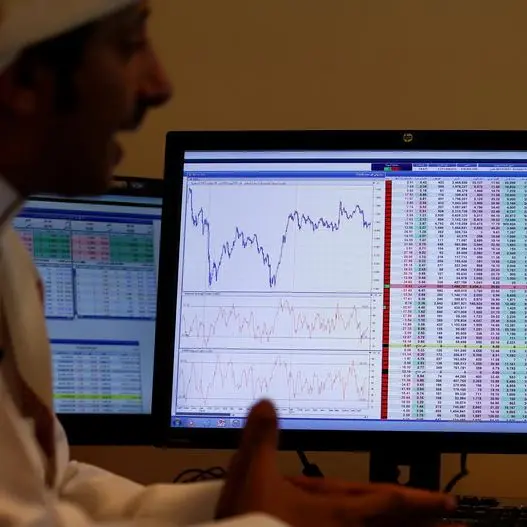PHOTO
World equities dithered at four-week lows on Monday, pressured by falling stocks in Asia, while European shares climbed on the prospect of an ECB rate cut on Thursday, government bond yields rose, and oil recovered from last week's beating.
MSCI's gauge of stocks around the globe fell 1.94 points or 0.24% to its lowest level in almost a month, while Europe's STOXX 600 index rose 0.61%.
Data on Monday showed China's consumer prices index rose in August at the fastest pace in half a year as food prices increased due to weather disruption, but was short of market expectations. Producer price deflation worsened, reflecting the underlying trend of a struggling economy.
This sent China's blue-chip index to close down 1.2%, hitting the lowest level since early February. The Shanghai Composite Index finished down 1.1%. while Hong Kong's Hang Seng Index lost 1.4%.
Japan's Nikkei fell roughly 0.5% as tech stocks declined.
"We are still looking back at Friday with people in Asia positioning for 25 basis point, not 50 basis point cuts. We'll see if the equity markets get nervous but at the moment all seems in good nick," said Kit Juckes, FX strategist at Societe Generale.
European stock markets opened higher and continued to climb with all regional bourses up over 0.5% .
Centre stage this week will be Thursday's European Central Bank rate decision. The ECB, which cut rates by 25 basis points (bps) in June, is widely expected to ease policy by the same amount.
S&P 500 futures rallied 0.6% and Nasdaq futures were up roughly 0.8%, following Friday's slide.
Fed fund futures dipped as investors wondered whether the mixed U.S. August payrolls report would be enough to tip the Federal Reserve into cutting rates by an outsized 50 bps when it meets next week.
So far, markets imply a 30% chance of a large cut, in part due to comments from Fed Governor Christopher Waller and New York Fed President John Williams on Friday, though Waller did leave open the option of aggressive easing.
"Our read of the data is that the labour market continues to cool, but we see no sign of the kind of rapid deterioration in conditions that would call for a 50 bps rate cut," Barclays economist Christian Keller said.
"Importantly, we also see no indication of any appetite for this in Fed communications," he added.
Investors are more dovish and price in 113 bps of easing by year-end and another 132 bps for 2025.
Data on August U.S. consumer prices on Wednesday should underline the case for a cut, if not the size, with headline inflation seen slowing to 2.6% from 2.9%.
Tuesday will see Democrat Kamala Harris and Republican Donald Trump debate for the first time ahead of the presidential election on Nov. 5.
YIELDS SLOW TO EASE
Euro zone and U.S. government bond yields rose after falling on Friday's U.S. jobs data.
There was a modest underperformance of French bonds after French newspaper La Tribune de Dimanche on Sunday reported that the French finance ministry had requested an extension to the deadline for submitting its 2025 budget to the EU beyond Sept. 20.
U.S. 10-year Treasury yields rose 5 bps to 3.76% , moving away from last week's 15-month lows. Two-year yields were also up around 5 bps, having hit March 2023 depths last week.
The yen also gave up some of its gains as the dollar firmed 0.8% to 143.30 yen. The euro dipped 0.3% to $1.1049 , having briefly been as high as $1.1155 on Friday.
Oil prices found some support as a potential hurricane system approached the U.S. Gulf Coast, having fallen almost 10% last week in their biggest weekly fall in 11 months amid persistent concerns about global demand.
Brent rose 63 cents to $71.70 a barrel, while U.S. crude climbed 66 cents to $68.33 per barrel.
(Reporting by Nell Mackenzie and Wayne Cole; Editing by Muralikumar Anantharaman and Mark Potter)




















